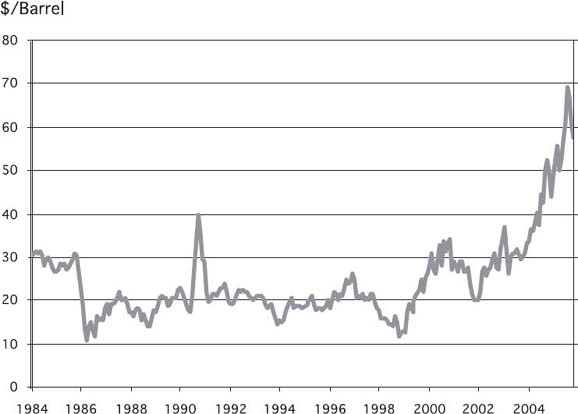8
Energy Commodities
This chapter focuses on the following energy commodities: petroleum, natural gas, and uranium. Uranium is the only commodity included in this book that is not traded on a futures exchange. I chose it because it has been of particular interest to investors over the past two years and is likely to continue to be interesting. The reason for including oil and gas is obvious. Oil is currently the single most important commodity in the world. The dollar value of gold derivatives trading (futures, forwards, options, and swaps) is larger than the volume of oil trading, but the dollar value of physical oil dwarfs gold, by a factor of about 20. Furthermore, oil fuels the world, from transportation to electricity generation. It is central to economic activity, and paramount these days in international and domestic politics.
Petroleum
Petroleum prices have risen sharply, from a cyclical low around $10 per barrel in 1999 to more than $70 in late August 2005. Prices backed off from there, but as of early 2006 oil still was trading around $60. (See Figure 8.1.) The outlook for petroleum prices probably was less ascertainable than ever before as of late 2005 and early 2006. Predictions as to future prices from respectable sources ranged from $25 to $100, and that is excluding the fringe crazies.

Figure 8.1 The Price of Petroleum
I expect oil prices to remain strong. That does ...
Get Commodities Rising: The Reality Behind the Hype and How To Really Profit in the Commodities Market now with the O’Reilly learning platform.
O’Reilly members experience books, live events, courses curated by job role, and more from O’Reilly and nearly 200 top publishers.

